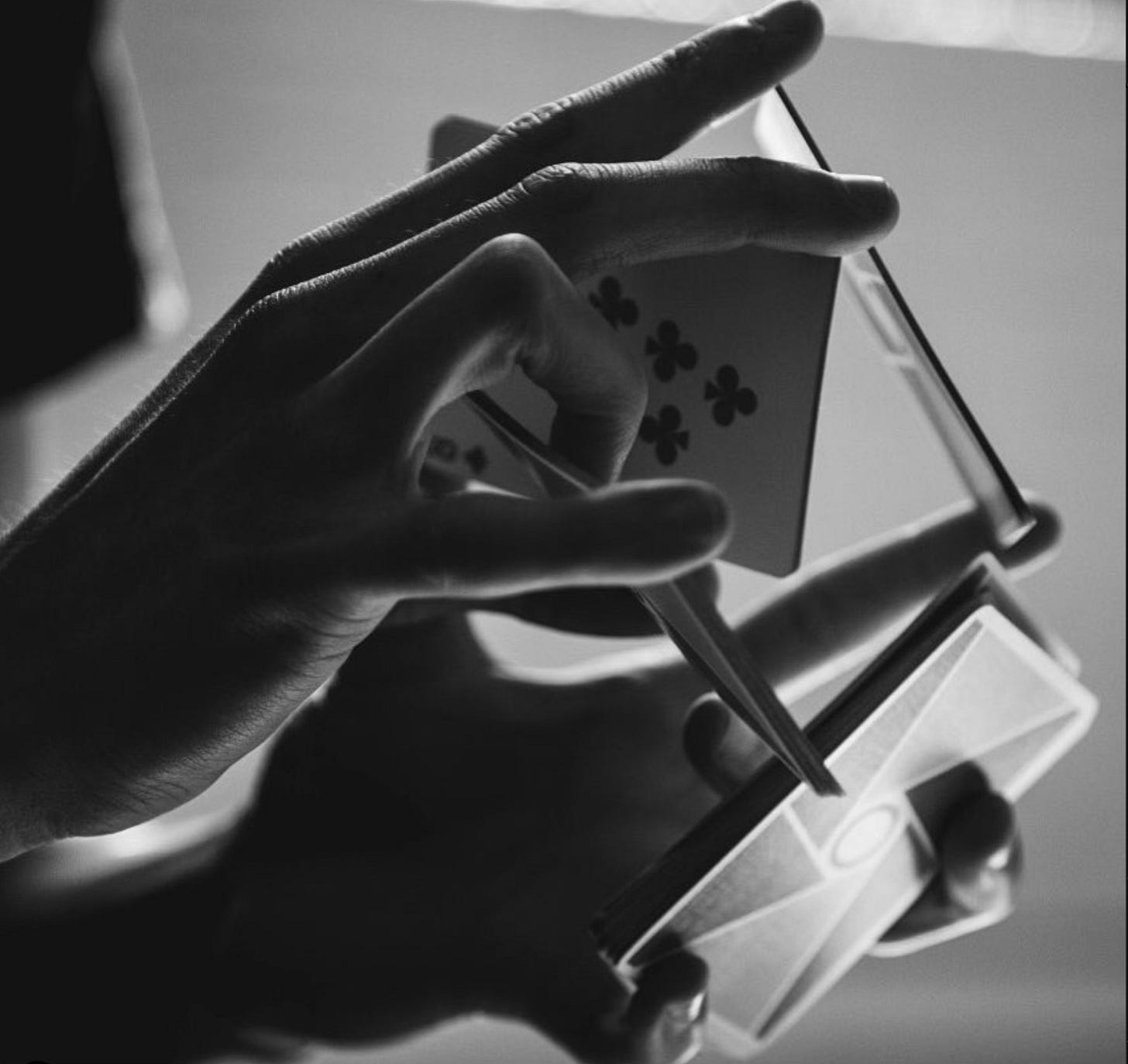Unity
By Antoine Cormerais
I have always wanted to create good cuts. Obviously my first creations were not so good, so around a year ago I tried to step my game up. This is when I started to put a lot of thinking into my creative process. Below you will find some ideas I keep in mind while I create — ideas I developed during the past year.
I believe a cut should be seen as a whole. A cut should make sense, which is why everything going on during the move should have a purpose during the cut. All the packets should be important, and none are less important than the others. By designing a cut this way, your first impression is that you get the feeling that the flourish is well-balanced. It feels like all the packets are interconnected and if you remove any one of them, the whole cut will not work anymore.
Conversely, if you add an extra packet, it will just lay there and add nothing to the move. I’ve seen lots of cuts where people like to add as many packets as possible so their cut looks more complicated, but complexity doesn’t necessary mean beauty, nor do I think adding a packet only for this purpose will end up with a good cut. Of course, creating a cut where every packet has the same importance is really difficult. As such, I try to make sure that every packet has at least something to bring at one point in the cut.
I can illustrate what I said above with my cut Bascule:
(*editor’s note: video no longer available)
Each packet has its own purpose. One is used to pass through the other three, but more importantly, it is used to close the cut. Then another packet is used as a base to allow the third packet to push the last packet. If even one of these three packets is removed, the pushing part of the move will not work at all.
I also believe that a good cut is organized around a single idea. Since the rest of the cut is used to make this idea come true, it should be the peak of the cut — the climax. I would even say that this is the heart of the move. Without it the cut would not be as good, just a generic cut. I really try to incorporate this philosophy when I am creating. Based on this concept, we can distinguish two cases. The first case is when you already have the idea in mind and you search for a way that will allow you to execute your idea. Of course, you must accept that the idea you had and the cut resulting from this idea will most likely be different. The second case, the more common one, is when you just mess around with the deck till you find something cool. Hours of searching to find the motion that stands out of the pack. Patience is the watchword here because when you find THE motion, you’ll know it.
I also like to make all my packets from the start, during the opener, and from thereon I restrain myself from creating any more packets during the rest of the cut. By doing this, I force myself to focus on the interaction between the packets, which will increase their interdependence. Moreover, since I mostly create two-handed cuts, I like to grip a packet with both hands to link them. This way, the cut looks more compact. But this does not add importance to the packet and it should not be the only purpose of this packet. This is just a little thing I like to incorporate.
Let’s talk about Squall to illustrate my creative process:
To start, I played around with a grip, and when I got three packets in a spinny position I searched for a way to spin each packet halfway, one after the other. This is the only thing I kept in mind and I did not have any idea of what the cut would look like when it was going to be smoothed out. The good thing about spinny moves is that there is no change of grips, so this way you can hone them really well. For Squall, it gives the illusion that every packet spins at the same time. Moreover, because the packets return to their original position after each one has done a full rotation, an additional cycle can be added and so on. Thus, the move is longer, but still appears to be a single sequence.
Also, I really paid some attention to the closer to make sure it would be in accordance with the rest of the cut; that is, to not change the grip to a non-spinny position. This kind of cut illustrates the idea of unity really well. The whole move is organized around one concept and nothing is left out. The only exception is the opener, which is the main downside of this move. If the spins could start directly, like Mockingbird for example, the whole move would feel even more unified from start to finish. This also brings up another subject. Nowadays, more and more openers start as just a setup to the move. By setup I simply mean a non-smoothable motion. I have not given enough thought to talk about this in depth, but I do think that this subject warrants further exploration.
To conclude, I want to remind you that this is just theory. Some cuts do not fit any of these ideas at all, but still they are just perfect. To me, I really felt that my cardistry improved when I started thinking about what I liked, and what I wanted to create by analysing the first cuts I created. At the same time, do note that I do not strictly follow these concepts — I just let the natural flow of the cut happen while I orient my creative process to be as close as possible to them. I hope this article makes you believe that this is worth the shot. Keep creating!
About the author, Antoine Cormerais:
Lucky winner of the Cardistry-Con 2015 Contest.



